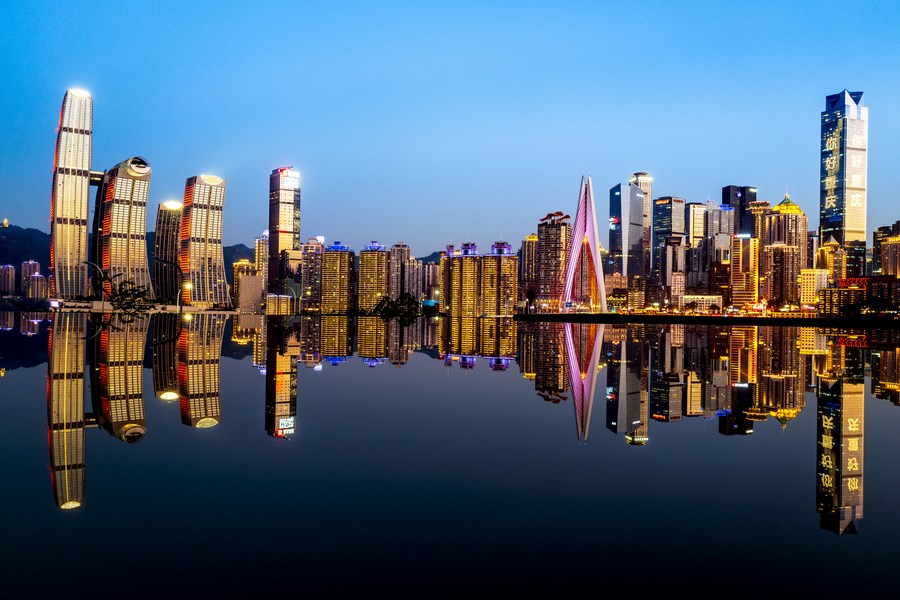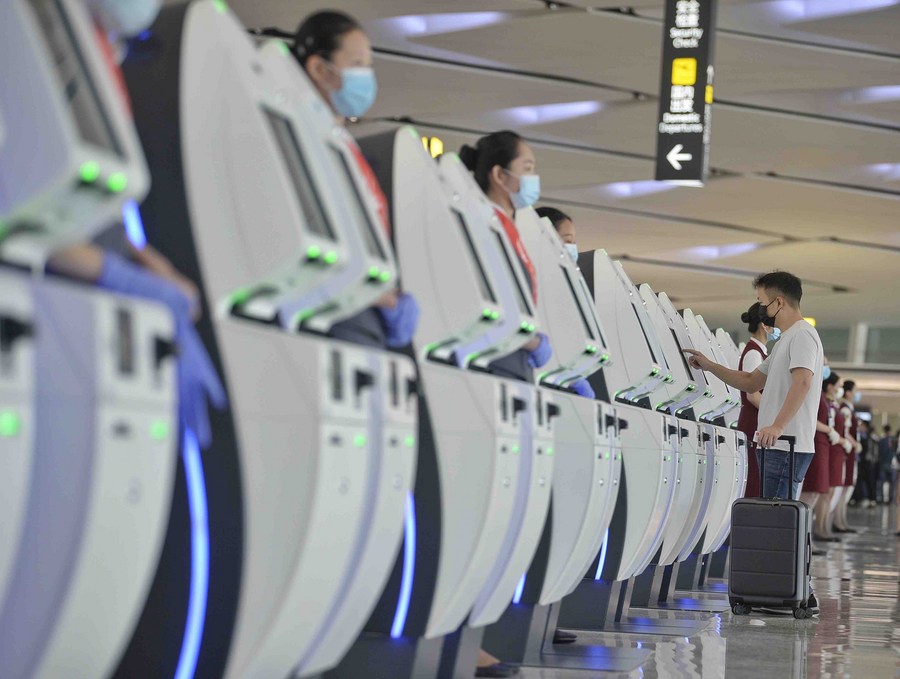
China issued a master plan on Wednesday for the construction of the Chengdu-Chongqing economic circle, demonstrating its determination to foster a key growth pole in western China.
The Chengdu-Chongqing economic circle is another important regional development strategy, following the Beijing-Tianjin-Hebei region, the Yangtze River Delta and the Guangdong-Hong Kong-Macao Greater Bay Area.

Photo taken on Sept. 30, 2021 shows the night view of Chongqing. (Xinhua/Liu Chan)
NEW GROWTH POLE
Covering about 185,000 square km, the Chengdu-Chongqing economic circle takes up 1.9 percent of the country's total land territory. In 2019, the economic circle had a permanent population of around 96 million and a GDP of 6.3 trillion yuan (about 984.7 billion U.S. dollars), accounting for 6.9 percent and 6.3 percent of the national total, respectively.
"The new economic circle is expected to drive the development of China's vast western region, and effectively solve the long-term problems of unbalanced and inadequate regional development in China," said Yao Shujie, a professor at Chongqing University.
"The Beijing-Tianjin-Hebei region, the Yangtze River Delta and the Guangdong-Hong Kong-Macao Greater Bay Area, all in the country's east, have become the main drivers of China's economy. But the western region has lacked a national-level economic circle," Yao added.
The plan aims to turn the Chengdu-Chongqing area into an economic circle with its own strengths and distinctive features, as well as a new driver and an important growth engine of the country's high-quality development, according to the document.
"China's western region is the domestic market with the most potential. Only by activating this market of about 400 million people and promoting the rise of the western region can high-quality development be promoted across the country," said Tang Jiqiang, an expert with the Southwestern University of Finance and Economics.
For a long time, the weak transport infrastructure of the Chengdu-Chongqing region has been one of the main stumbling blocks in its development. To solve the problem, the two cities have invested heavily in transport infrastructure in recent years.
"Developed transportation system is an important symbol of a world-class metropolitan area. It will also be the key to building the Chengdu-Chongqing economic circle," said Tang.

Passengers check in at the Chengdu Tianfu International Airport in Chengdu, southwest China's Sichuan Province, June 27, 2021. (Xinhua/Liu Kun)
HIGHLAND OF OPENING-UP
The intended reach of the inland Chengdu-Chongqing economic circle is not limited to China. By 2035, the economic circle will become an active growth pole and a powerful driver with international influence, the plan says.
As a new land-sea passage, China's southwest has a unique geographical advantage that helps it better connect with Europe, Southeast Asia and South Asia.
So far, the New International Land-Sea Trade Corridor, with Chongqing and Chengdu being the key operation centers, has expanded its reach to more than 300 ports worldwide.
The corridor is a trade and logistics passage jointly built by Singapore and provincial-level regions of western China.
The two cities are also major providers of China-Europe freight-train services. The China-Europe freight trains from the two cities have made more than 3,500 trips so far this year, over 30 percent of the country's total.
The freight service became a lifeline to help stabilize the global trade supply chain last year when sea and air transport was severely disrupted amidst the COVID-19 pandemic.
"With the help of the China-Europe freight-train service and the new international land-sea trade corridor, the Chengdu-Chongqing region will grow into a major supply chain hub for the Belt and Road countries and regions," said Tang.
"The economic circle will help build a smoother and more efficient international logistics corridor for western China, which can also boost the economic recovery of Europe and the Association of Southeast Asian Nations (ASEAN) in the post-COVID-19 era, and facilitate global trade and investment," said Ji Shouwen, a professor at Beijing Jiaotong University.
Liu Zimin, a professor at Southwest University, said the building of a new engine for regional development and a highland for opening-up in the southwest is a reflection of China's new opening-up pattern, which features the interconnection of the land and sea, and mutual support between the east and west.
The potentiality of this area of China is still to be discovered, the launch of the Chengdu-Chongqing economic circle opens up many more opportunities, said Massimo Bagnasco, vice president of the European Union Chamber of Commerce in China Executive Committee (EUCCC) and chair of the EUCCC's Southwest China Chapter Board.